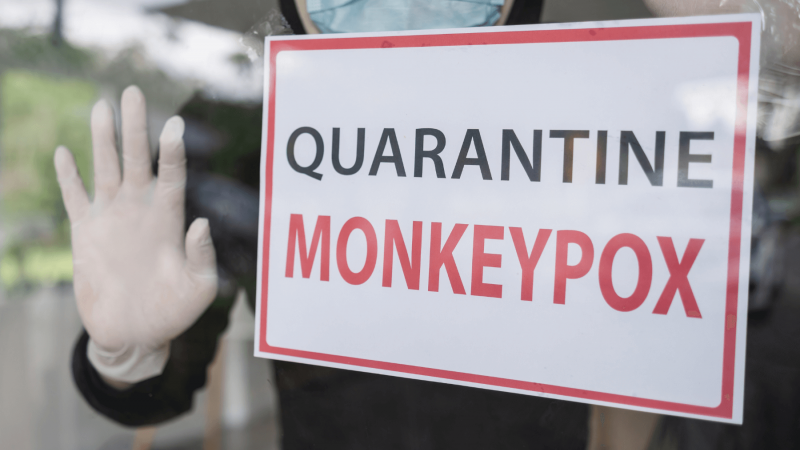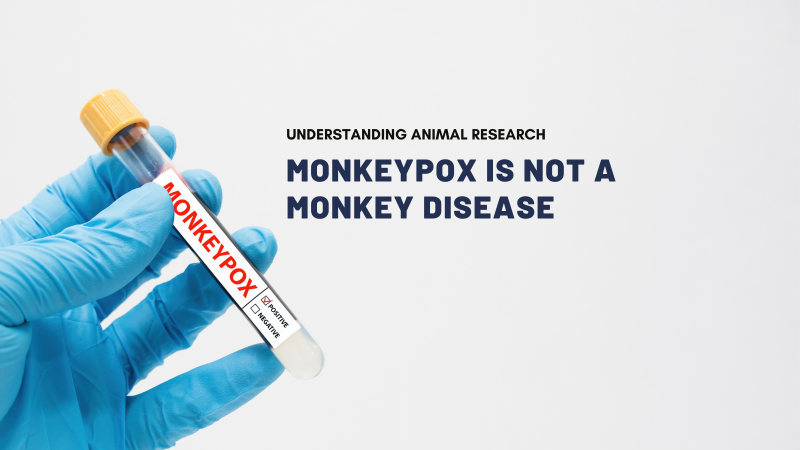
Mpox (previously known as “monkey pox”) is a viral zoonotic disease which means it can spread from animals to humans. Many animals can carry the virus, but not all species are affected in the same way. Some small mammals can be infected with mpox without showing symptoms, while primates can get sick and display similar symptoms as humans. Which species are really at risk according to research?
Pox viruses may infect a variety of different animals, in addition to people. For instance, monkeys, anteaters, hedgehogs, prairie dogs, squirrels and shrews have been known to carry the mpox virus. Today, the extent to which the virus can infect animals and which animals are at the highest risk remains unknown. Research on animals is ongoing to fully understand the spread of the pathogen. We are still learning which species of animals can get infected and which of those actually get sick.
Reptiles, amphibians and birds are unlikely targets of mpox because they are not hosts to viruses of the same orthopoxvirus family. Mammals, however, are at greater risk. In particular, rodents and non-human primates (monkeys and apes such as chimps) appear to be most vulnerable to infection. However, Mpox affects each species differently. Not all animals develop a rash upon infection. In fact, rodents and small mammals seem to carry the virus without any symptoms, and may well be the original host of the pathogen.
Although the exact source of mpox in nature remains obscure, it is likely that small animals play an important part in the transmission of the disease among human populations. Rope and sun squirrels, giant-pouched rats, and African dormice carry the virus in parts of West and Central Africa and may be the cause of outbreaks. Infected animals can spread the virus to people or other animals through close contact. Humans can also be a vector of infection to other species. Domesticated animals can be at risk of contracting mpox if they live in the same household as an infected person or animal, or have come from the same facility, shelter or pet store as another infected animal or person.
In 2003, the first cluster of human mpox cases in the US – and the first outside of Africa - was caused by pets. An outbreak of mpox in domesticated prairie dogs occurred after they shared bedding and caging with a shipment of infected small mammals from West Africa. This led to 47 human cases in six states. However, no cases of mpox infection or disease have been confirmed in common domestic animals, such as dogs and cats.
Are cats and dogs at risk of catching mpox?
One published report did suggest dogs may be susceptible to the mpox virus. It described in 2022 the case of a four-year-old dog in France that had been living with and sharing the bed of two mpox patients. DNA swabs from the dog came back positive for the mpox virus. However, follow-up investigations did not establish disease in the reported animal. Although the dog was indeed a carrier of the virus, it did not develop the disease. Because PCR tests used to detect mpox infection can pick up on traces of both live and dead viruses, there was some debate about whether the positive results were from true infection or just contamination of the pet’s skin with viral particles from the infected humans in the same household. A similar case was documented in Brazil in August 2022, when a five-month-old puppy developed lesions that came back positive for the mpox virus. Again, the conclusions excluded real infection but led researchers to challenge and investigate human to pet contamination.
Between July 2022 and March 2023, researchers in the US collected skin and blood samples from pets living with mpox-infected people as well as environmental samples from the household. Twenty-four dogs, nine cats and one rabbit were included in the investigation. Four dogs and a cat came back positive for mpox virus DNA and human RNase-P, an indication of human contamination. However, when the samples were put into culture, none were viable, and no animal developed antibodies against the mpox virus, suggesting that the animals weren’t actually infected. Although this does not disprove the possibility that pets can become infected by humans, it does provide more evidence that positive results could be due to contamination or a very low (and maybe irrelevant) level of transient infection.
What about other pets?
While the evidence for human-to-animal infection among cats and dogs is contestable, other pets are known to be at risk. Mpox infections are far more common in several other species.
For instance, lagomorphs such as rabbits (especially young rabbits) and hares are known to be susceptible and sensitive in experimental conditions. Pet rodents, such as brown rats, mice, guinea pigs and hamsters, do not appear to be very susceptible to the virus in adulthood, but younger animals may be susceptible. Members of the family Sciuridae, including squirrels and prairie dogs, also appear to be susceptible and sensitive and may be at greatest risk of becoming contaminated by humans. However, these animals are not allowed to be kept or sold in many countries.
A lot of these animals, such as hamsters, guinea pigs, dogs, and cats, can be infected by other types of orthopoxviruses, which might give an indication of their susceptibility to mpox.
|
Animal |
Can be infected with mpox ? |
Can be infected with other orthopoxviruses? |
|
Prairie dogs |
Yes |
Yes |
|
Squirrels |
Yes |
Yes |
|
Marmots and groundhogs |
Yes |
Yes |
|
Chinchillas |
Yes |
Unknown |
|
Giant-pouched rats |
Yes |
Unknown |
|
Gerbils |
Unknown |
Yes |
|
Guinea pigs |
Unknown |
Yes |
|
Hamsters |
Unknown |
Yes |
|
Mice |
Yes but may vary according to animal strain, variety of species |
Yes |
|
Rats |
Yes but may vary according to animal strain, variety of species |
Yes |
|
Dogs |
Unknown |
Yes |
|
Cats |
Unknown |
Yes |
|
Domestic rabbits |
Yes but may vary according to animal strain, variety of species |
Yes |
|
Hedgehogs |
Yes |
Unknown |
|
Shrews |
Yes |
Yes |
|
Monkeys and Apes |
Yes |
Yes |
|
Cows |
Yes |
Yes |
|
Camels |
Unknown |
Yes |
|
Goats |
Unknown |
Unknown |
|
Sheep |
Unknown |
Unknown |
|
Pigs |
Unknown |
Unknown |
Source: cdc.gov
One thing is clear: further research and surveillance are needed to determine whether dogs, cats or other animals, are susceptible to mpox. Even within some species known to be unresponsive to the mpox virus, very young animals could be vulnerable to the virus. A lot still needs to be uncovered. Data and scientific literature investigating the receptivity of pets and animals to mpox remain very limited.
How to protect your pet against mpox
While data is so limited, it makes sense to be cautious and to assume that pets could be at risk. As Lori Teller, DVM, president of the American Veterinary Medical Association (AVMA) said : “Given what we know about other orthopoxviruses, it would be wise to assume pets might catch mpox too, and accordingly, take appropriate measures to prevent infection or disease spread.”
There are a few things you can do to prevent any risks to your animal. The US Centers for Disease Control and Prevention (CDC) recommends companion animal owners with mpox limit their interactions with their pets while infectious, particularly if they are sharing smaller living spaces. The pet should also have limited contact with contaminated objects in the home, such as clothing, sheets and any other item that comes in contact with the skin or fluids of infected individuals.
Precaution is recommended until more information is available on the susceptibility and sensitivity of common mammalian companion animal species to mpox. These recommendations, issued in the context of the expansion of clade IIb of the mpox virus, should be applied even more strictly with regard to clade Ib, given its greater virulence - at least in humans - and an even higher risk of emission of viral particles by patients. Time will tell whether that becomes an issue. If it does, yet more research will be needed, since we can’t assume clade Ib and clade II have the same risk of infection in animals.
Last edited: 10 October 2024 15:01



